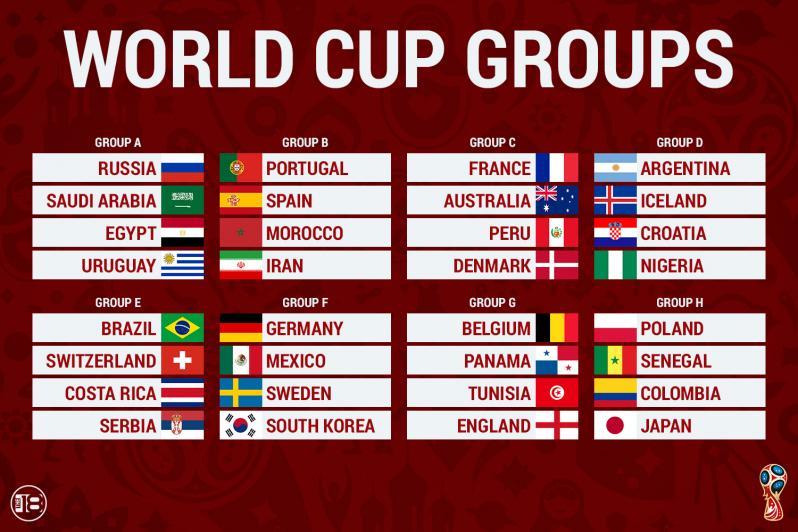Most memorable moments at the World Cup come in the knockout rounds, when it’s win or go home. But in order to get to the knockout rounds, teams must advance through the group stage. The World Cup group stage rules and World Cup tiebreakers will help separate those teams welcomed into the playoff rounds and those going home early.

World Cup Group Stage Rules
Since 1998, when FIFA increased the number of teams competing from 24 to 32, the World Cup group stage rules have remained the same. The tournament starts with eight groups of four, with every group playing a round-robin schedule of three matches for each team. To prevent any shenanigans or teams having an advantage by knowing what’s at stake, groups play their final group-stage matches at the same time.
During these matches, there is no extra time and matches can end in draws. Teams earn three points for a win and one point for a draw. The top two teams in each group advance to the Round of 16.
Perhaps most importantly when it comes to World Cup group stage rules are the World Cup tiebreakers. Points are the first deciding factor when determining who advances, but after that, FIFA uses the following World Cup tiebreakers.
World Cup Tiebreakers In Group Stage
- Greatest number of points
- Goal difference in all group matches
- Goals scored in all group matches
If two or more teams are still even based on the above criteria, the following World Cup tiebreakers are put into use.
- Greatest number of points obtained in group matches between teams concerned
- Goal difference resulting from group matches between teams concerned
- Greater number of goals scored in all group matches between teams concerned
- Greater number of points obtained regarding fair play conduct (yellow cards: -1, indirect red card (as a result of a second yellow card): -3, direct red card: -4, yellow card and direct red: -5)
- Drawing of lots by FIFA
Continuing with the World Cup group stage rules, the top two teams in each group are placed on opposite sides of the bracket. This is to prevent group opponents from facing off again unless they reach the final. The only time this wasn’t done since 1998 was in 2002, when Japan and South Korea were divided so they could play in their home country as long as they were in the tournament.
Some random history on the World Cup group stage rules:
- In 1950 there was no knockout round of any kind, and the entire tournament was determined by group stages.
- In 1934 and 1938, there was no group stage, with the entire tournament a straight knockout playoff. This idea was scrapped after countries complained about traveling around the world just to be eliminated after one match.
- In 1954, the group stage used extra time. This was because the groups of four only played two matches each and FIFA wanted to prevent draws, which were awarded only after 120 minutes of play.
The 2018 World Cup group stage ends on June 28.






